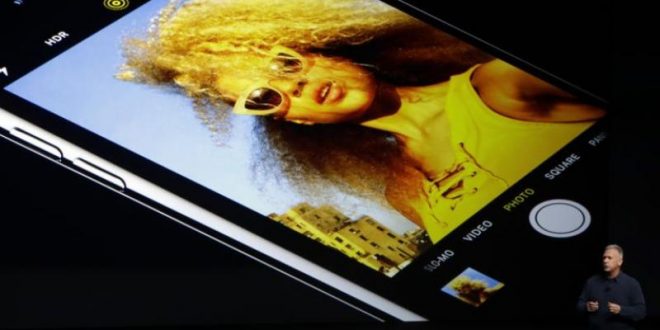Apple has officially announced the iPhone 7 and iPhone 7 Plus. The new iPhone features a design that’s very similar to last year’s iPhone 6S (and the year prior’s iPhone 6), with a rounded aluminum body.
Senior vice president of worldwide marketing Phil Schiller took the stage and walked viewers through the features of the two phones – pre-orders for which begin on September 9 in select territories.
Battery: By far the most important upgrade is improved battery life. Apple claims the iPhone 7 can last for 14 hours of browsing the Web on Wi-Fi, and that anybody switching from the iPhone 6s will experience about two more hours of battery life every day. I’ll have to verify this with my own testing, but it’s impressive that Apple didn’t need to make the phone thicker.
Water-resistance: The iPhone 7 is also, at long last, water-resistant, a feature rival Samsung first introduced to its phones in 2014. The seal provides slightly less protection than the one on Samsung’s latest phones. (It’s a nominal difference: One can sit in up to 1 meter of water for 30 minutes, the other can sit in 1.5 meters of water.) Regardless, it’s a lifeline if your phone drops into a pool, or someplace more dirty—a lifeline all previous iPhones lacked.
Camera: Apple lost its crown for the best phone camera to Samsung earlier this year. But the iPhone 7 has an improved sensor and a lens that opens up to f1.8 (previously, it was f2.2). That means much better night shots.
The larger iPhone 7 Plus has perhaps the only drool-worthy new feature Apple debuted on Wednesday: two lenses on the back—a trick we saw from LG and Huawei earlier this year. The iPhone 7 Plus’ dual cameras allows it to better zoom into scenes, and add depth effects normally associated with expensive SLR cameras. Apple showed off sample nighttime photos that looked solid, but the camera is one of the most important elements I’ll be testing in the field.
Headphone: As you may have heard, Apple giveth and Apple taketh away. The iPhone 7 drops the standard headphone jack, but comes with earbuds that plug into the Lightning port, plus a dongle so you can still use your old favorite wired headphones. Apple’s rationale for this change—that we want too much jammed into our tiny phones—fell flat to me. It’s an annoyance, but one I think we’ll get used to soon enough. And with its $159 AirPods, Apple is helping to usher in a new generation of totally wireless earbuds that will make using any device more pleasant.
Most dangerous for Apple’s cachet, there remain areas where the iPhone 7 lags behind the competition. Its screen, while 25% brighter and more colorful than ever, still has only a fraction of the resolution on Samsung’s latest. Photos and text look less crisp on the iPhone screen, and the low resolution also keeps it from being effective for new experiences like VR.
In styling, Samsung’s flagships now take the screen right up to the edge—the iPhone 7 still has a border that looks oh so 2014.
Aside from the AirPods, Apple didn’t really bolster its world of software and services, either. There’s a new Apple Watch with a faster processor and better waterproofing that will appeal to athletes But there’s no new hardware like Amazon’s Echo speaker that could bring the Siri experience into the home’s common spaces.
All of this adds up to a pretty incremental update to everything except possibly the camera. But little improvements may increase your happiness as much a radical new design. For anyone using an iPhone 5s or earlier, the iPhone 7 will certainly feel like a big deal.
For everyone else, welcome to the new normal. In the maturing smartphone business, innovations are fewer. All the more reason to hold on to our phones longer.
Agencies/Canadajournal
 Canada Journal – News of the World Articles and videos to bring you the biggest Canadian news stories from across the country every day
Canada Journal – News of the World Articles and videos to bring you the biggest Canadian news stories from across the country every day



